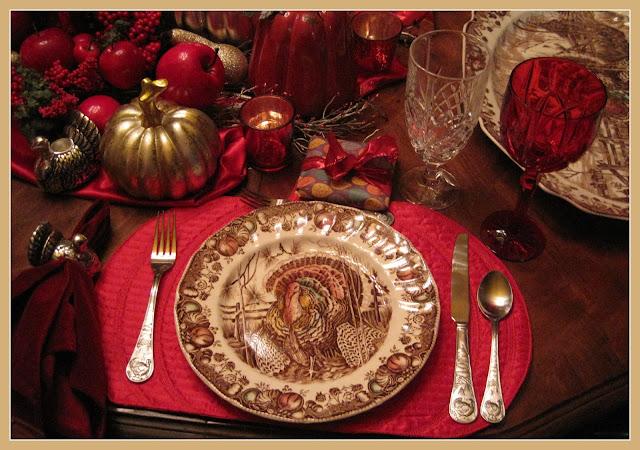We were sitting at Café DuMonde in New Orleans when we first tasted coffee with chicory in it. Joe and I fell in love with the flavor and brought home a few cans of the stuff. Back at that time, you couldn’t get online and order it … and nobody sold it in our little rural corner of the world! Now it is easy to get and I recently bought a wintertime supply of the K-cups!
 The practice of drying and grinding chicory roots to
add to coffee probably came about in America during the Civil War. It was simply the way of either completely
substituting the use of coffee beans or making what coffee beans you had go
much farther. In other countries, however, it was a common practice long before
that time. In India, Southeast Asia,
South Africa and in France the proportions of chicory to coffee vary, but the
cultures still enjoy the
combination. In the 1970s,
Germany experienced a coffee crisis (so did the United States, because I
remember it) and started combining coffee and chicory. Then the combination became popular in
Spanish, Greek, Turkish, Syrian, Lebanese and Palestinian cuisines. Oh, there is such a global love of coffee!
The practice of drying and grinding chicory roots to
add to coffee probably came about in America during the Civil War. It was simply the way of either completely
substituting the use of coffee beans or making what coffee beans you had go
much farther. In other countries, however, it was a common practice long before
that time. In India, Southeast Asia,
South Africa and in France the proportions of chicory to coffee vary, but the
cultures still enjoy the
combination. In the 1970s,
Germany experienced a coffee crisis (so did the United States, because I
remember it) and started combining coffee and chicory. Then the combination became popular in
Spanish, Greek, Turkish, Syrian, Lebanese and Palestinian cuisines. Oh, there is such a global love of coffee!Chicory isn’t only about coffee. Chicory leaves are used in many
cultures. In the United States, we
probably see wild chicory growing wild alongside highways … with other
wildflowers. In many places, it is
widely cultivated for its leaves. The
leaves are eaten raw in salads. The name changes depending upon the locality. In Italy, red radicchio is very
popular and is prepared in salads and soups and is grilled as a side dish. In Greece, radiki is boiled and used
in salads, but it is also baked into savory pies with the addition of spinach,
onion and feta cheese. The Germans roast
endive and new potatoes and serve it with a tangy cream sauce.
Chicory dates to ancient Greek and Roman times. It was used for medicinal purposes and was
known as a sedative favored by insomniacs. It was cultivated in the 1500s in
Italy, but the deep red little ball of bitterness wasn’t developed in
1860. A Belgian grower took the plants
from the ground, placed them in vats of water in darkened sheds. The elimination of sunlight also eliminated
the production of chlorophyl, so the plants turned deep red.
The chicory plant has big roots that look like white
carrots. Those are the roots that are
dried and ground into coffee. Chicory
has several cousins including endive and the beautiful radicchio that I’m
preparing today. Dandelions are a cousin
to chicory and the greens have a similar flavor! Frisee and escarole are also cousins, and
both have the bitter, tart flavor.
When I search American cookbooks from my favorite
vintage period … the 1950s and 60s … I don’t find many recipes for
Radicchio. There are many recipes,
however, for chicory greens sauteed with a spritz of vinegar and cookbooks from
Midwest and Southern localities often include recipes for wilting dandelion
greens or frying the blossoms. There are plenty of recipes for soups that
include escarole, and they aren’t necessarily parts of Italian cuisine.
Today, you get two recipes. The first is my after Thanksgiving creamed
soup. The second recipe is what we put
on that soup today! Unique and
delicious!
Creamed
Potato Soup
Made
with Thanksgiving Leftovers
5
medium russet or golden potatoes, peeled and cubed
1
turkey wing tip left from the roasted turkey
Left
over creamed corn (2 cups more or less)
Left
over mashed potatoes (2 cups more or less)
A
few leaves of fresh sage
1
small onion, chopped
1
to 2 cups of left over giblet gravy
1
cup of cream or half and half
Sauté the cubed potatoes, onions and fresh sage in a
little olive oil, until the onions begin to turn translucent. Add 2 cups of water and the turkey wing and
let the potatoes simmer until they are done.
Remove the turkey. Add the
creamed corn, mashed potatoes and gravy.
Use an immersion blender and puree the soup. Finish with the cream, adding more if the
soup is too thick.
You can add salt and pepper, but the already prepared
foods will probably include enough seasoning.
This soup is a little bit sweet because of the addition of corn. That makes it a perfect base for the radicchio leaves.
Fried Radicchio Leaves
These are a perfect topping for this cream soup. They would also be delicious on a fresh salad.
Heat a half inch of olive in a heavy skillet. Pull
several leaves from the head of radicchio and dust them with flour. Gently lay them in the hot oil and turn them
over as soon as the edges start to brown.
If you want a thicker crust, dip the leaves in an egg wash before
dipping in the flour.
Drain the leaves on a paper towel and place them on
top of a steaming bowl of creamy potato soup.
This post is a part of my 2020 Vintage Vegetables
project! Click through the menu tab to
see similar posts. I’ll also be sharing
with a couple of blog parties, so check my list on the sidebar.

































